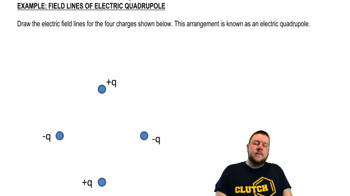Electric Field Lines definitions Flashcards
 Back
BackElectric Field Lines definitions
1/15
Terms in this set (15)
- Electric Field LinesVisual representations indicating the direction a positive charge would move in an electric field.
- Positive ChargeSource of electric field lines that point outward, indicating the direction of force on a positive test charge.
- Negative ChargeSource of electric field lines that point inward, indicating the direction of force on a positive test charge.
- Electric DipoleA pair of equal and opposite charges, with electric field lines showing complex interactions.
- Coulomb's ConstantA proportionality constant in electrostatics, denoted as k, used in calculating electric field strength.
- Electric Field StrengthMagnitude of the electric field at a point, decreasing with distance from the charge.
- SymmetryA property used to simplify electric field calculations, especially in dipoles, where vertical components cancel.
- VectorA quantity with both magnitude and direction, used to represent electric fields and forces.
- MidlineThe line equidistant from charges in a dipole, where net electric field points in a consistent direction.
- ForceThe interaction experienced by a charge in an electric field, proportional to the product of charge and field.
- ElectronA negatively charged particle that moves opposite to the direction of electric field lines.
- Test ChargeA hypothetical charge used to determine the direction and magnitude of an electric field.
- Field Line CurvatureThe bending of electric field lines due to the influence of nearby charges, especially in dipoles.
- Point of InterestSpecific locations used to analyze electric field lines and their interactions in a charge arrangement.
- Net Electric FieldThe resultant electric field from multiple charges, considering both magnitude and direction.


